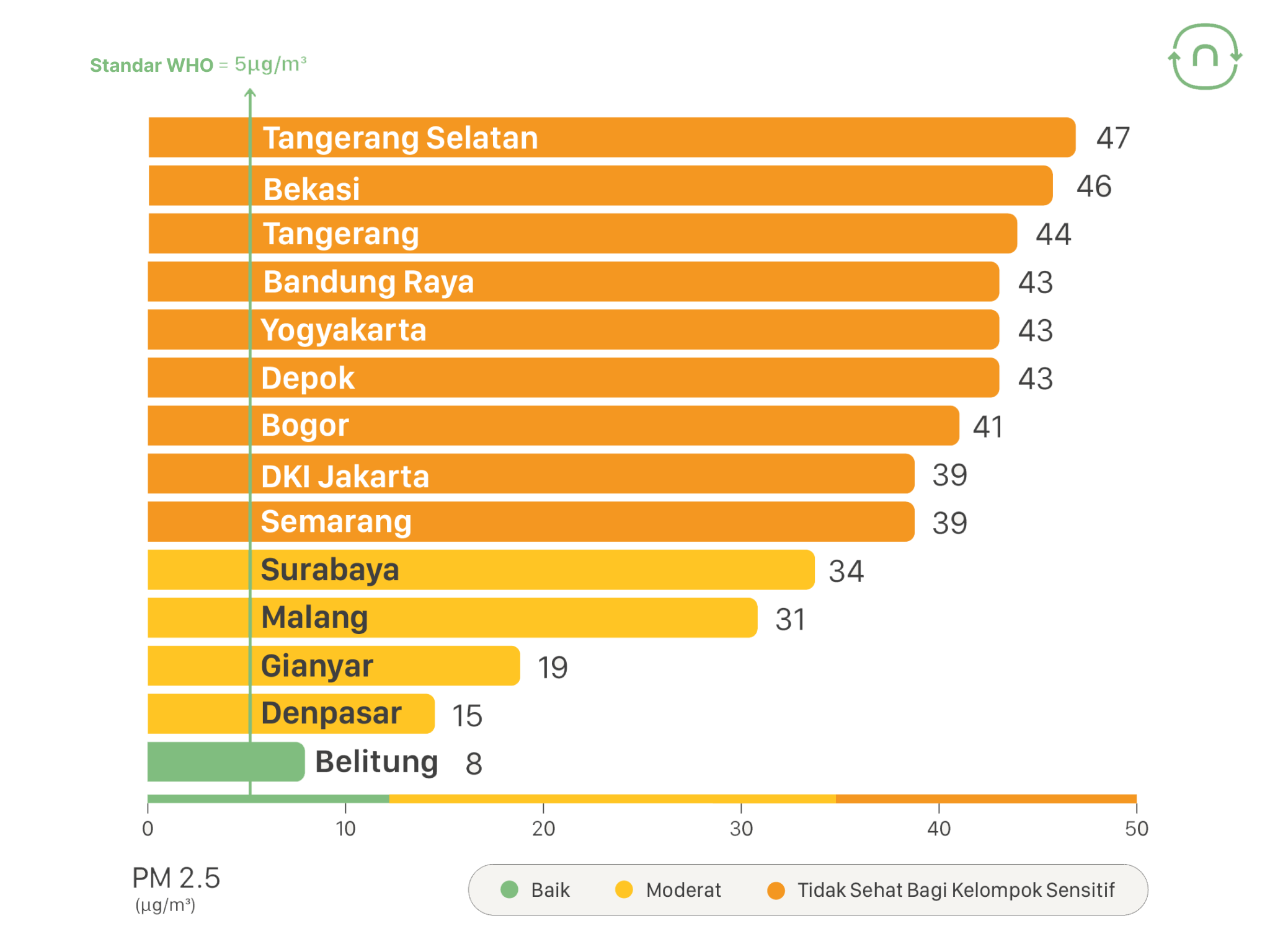Does air pollution cause irregular heart rhythms in healthy teenagers?
Concerns are now being raised that air pollution is triggering cardiac arrhythmias.
- Inhaling PM2.5 impacts two types of irregular heart rhythms characterized by a “skipped heartbeat”
- During the 24-hour study period, 79% of participants experienced at least one heart arrhythmia. Within that group, 40% had only premature atrial contractions, 12% had only premature ventricular contractions, and 48% had both.
- Each increase of 10 μg/m3 in PM2.5 caused a 5% increase in the number of premature ventricular contractions within two hours of exposure.
Being in a location with poor air quality holds a total concern for our health. A new and alarming study has found that very small pollutant particles in the air — Particulate Matters (PM2.5) — may trigger an irregular heart rhythm within two hours after exposure in healthy teenagers. These microscopic pollutants less than 2.5 micrometers in diameter can slip past the body's defenses, penetrate deep into the lungs, and damage the vital organs in the human body.
This time, we've compiled some key points based on the study that you need to know:
PM2.5 is one of the triggers of arrhythmia
Arrhythmia is the irregularity of the heart, with a rhythm that is too fast or too slow. Irregular heart rhythms can cause sudden cardiac death in healthy adolescents. PM2.5 may contribute to the risk of sudden cardiac death among them.
Once inhaled, the pollutants irritate the lungs and blood vessels around the heart, and previous research has suggested that over time, pollutants increase the process of disease in the arteries.
Breathing PM2.5 impacts two types of irregular heart rhythms characterized by a “skipped heartbeat”
When PM2.5 is inhaled, it causes two types of irregular heart rhythm effects: premature atrium contractions and premature ventricles contractions.
In premature atrial contractions, the heartbeat originates from the atria (upper chambers of the heart). This contraction has been linked to the risk of irregularities in the heart's upper chamber vibrations that can increase the risk of blood clots and stroke.
There are also premature ventricular contractions, which are contractions that occur when the heartbeat originates from one of the ventricles (lower chambers of the heart). This also potentially increases the risk of heart attack, stroke, heart failure, or sudden cardiac death later in life.
Treatment with medications and procedures may be advised if they frequently occur and cause a frequent sensation of a skipped heartbeat, a fast heartbeat, or a pounding heart.
A 10 μg/m3 increase in PM2.5 increased the rate of premature ventricular contraction by 5% over 2 hours of exposure
The study, which analyzed health data on 322 adolescents (average 17 years old) in Pennsylvania, found that a 10 μg/m3 increase in PM2.5 increased the rate of premature ventricular contraction by 5% over 2 hours of exposure. This study was also conducted with a daily average PM2.5 of 17 μg/m3, whereas the WHO recommended daily average standard is 15 μg/m3.
During the 24-hour study period, 79% of the participants experienced at least one irregular heart rhythm. 40% had only premature atrial contractions, 12% had only premature ventricular contractions, and 48% had both. There was no link between the level of PM2.5 and the frequency of premature atrial contractions.
Now, let's look at the average air quality data in several cities in Indonesia so far during 2022.

The high pollution in all of these areas, except Belitung, increases the risk of arrhythmic diseases for teenagers in these cities. From this data, the potential arrhythmia that may occur in adolescents is:
16% for South Tangerang
16% for Bekasi
15% for Tangerang
14% for Greater Bandung
14% for Yogyakarta
14% for Depok
13% for Bogor
12% for DKI Jakarta
12% for Semarang
10% for Surabaya
8% for Malang
0% for Denpasar
Air pollution affects us all
We are all aware that air pollution is pervasive and unpredictable. As a result, preventive measures against air pollution should be implemented to reduce the risk of cardiac arrhythmia in teenagers. By reducing exposure to air pollution, the risk of heart arrhythmias during adolescence may be reduced, leading to better health in old age. Here are some tips you can do to reduce the exposure to air pollution:
- Always wear a mask when doing outdoor activities
- Avoid intense exercise outdoors. Consider exercising indoors or in a gym studio when the air quality outside is poor.
- Routinely monitor air quality with the Nafas app before going outside. This way, you can determine the preventive measures you can take to avoid air pollution.
To make the most of your moment with Nafas, click here.